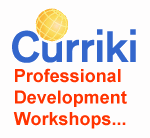By Kim Jones, CEO, Curriki
 Is Curriki a learning service? Is Curriki a not-for-profit organization? Is Curriki a repository for free, open and shareable curricular materials?
Is Curriki a learning service? Is Curriki a not-for-profit organization? Is Curriki a repository for free, open and shareable curricular materials?
Yes, all of these, but more. At its heart, Curriki is a global community, composed of educators, teachers, parents and students. It is a community that recognizes the value of having a large repository of vetted K-12 learning materials that are not only free, but available for sharing, mixing and matching, and repurposing to particular needs for classrooms around the world.
Curriki hosts more than 53,000 resources that range from simple lessons to full courses, all of which have been donated by teachers and our Partners in the last six years. Everyone in the world has free and open access to not only use the resources we have, but can remix, reuse and share them with the Curriki community and the world at large.
Contribute by uploading your original lesson plans, units, courses, and other learning resources to share with fellow teachers – anything from simple time-saving tips, to complete standards-based lesson plans. Just go to the Publish Resources page to get started. We’ll walk you through it! You will be able to enter details or “metadata”, such as keywords, that enable others to find your content easily. You will also be able to select the creative Commons license that is best for you. Learn more about, and choose from, Creative Commons Licenses here.
For example, you can:
- Add lesson plans (or other materials) from your computer. Curriki supports Word, Excel, PDF, PowerPoint, .notebook, and other file formats.
- Upload videos
- Create your own lesson plans with our templates or from “scratch” with our wiki tools.
We encourage you to publish your best curricula and learning materials for educators around the world to see and use. Our goal is to provide excellent content. Uploaded content can be nominated for expert review. Reviewed resources are tagged with their rating (1, 2, or 3) and a narrative review by a member of the Curriki Review Team.
Besides contributing resources, as part of the Curriki community you can Join Collaborative Networking Groups in order to connect with fellow educators and exchange ideas, best practices, and curricula. There are over 750 groups on Curriki today, across many areas of interest and various geographies. You can also subscribe to our blog feed for insights and recommended resources from Curriki, fellow teachers, and industry experts. Add your own comments to the conversation.
If you are not already a Curriki member, please join! It’s free, and it’s easy. As a Curriki member, you can use and affect the resources you find in many ways, helping to develop the repository for your own use and in support of others.
Login or Join to add a resource or join one of the many Curriki groups today!












